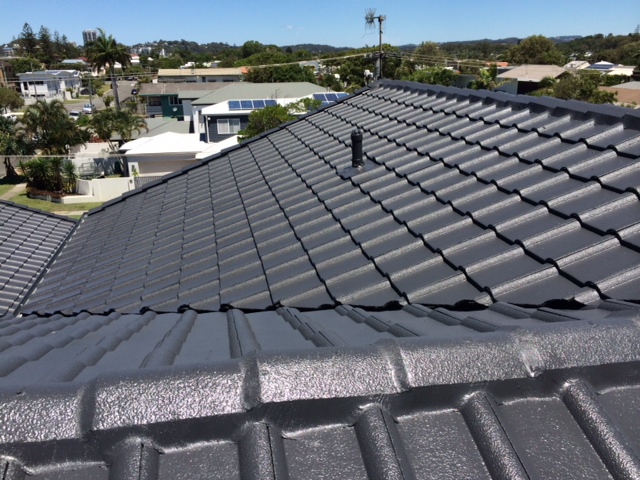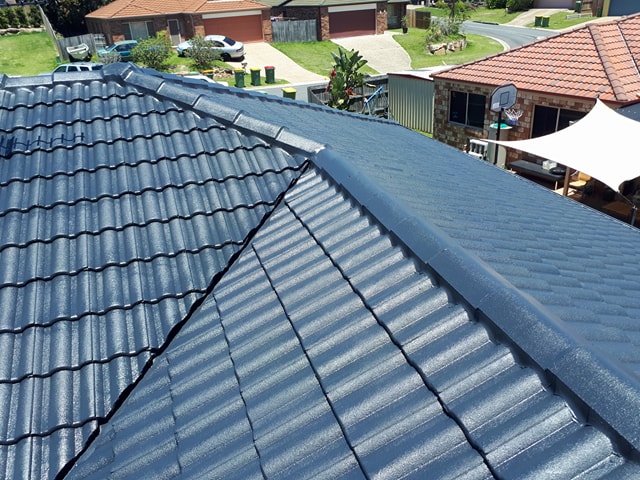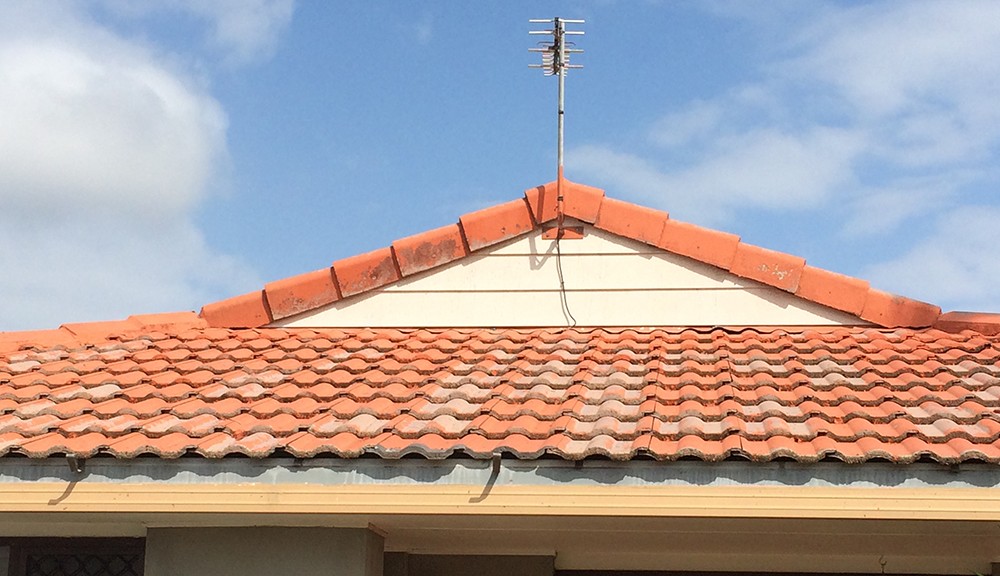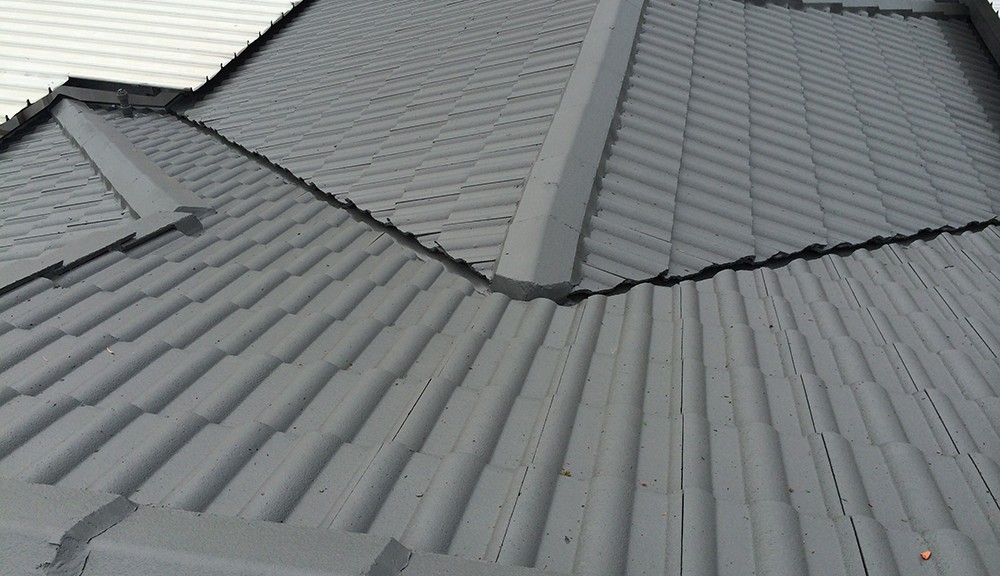How to paint your roof: step by step?
The roof painting process will vary depending on whether you need to paint roof sheeting, shingles, or other Colorbond materials, the slope of your roof, and the painting equipment you want to use.
1. Choose your tools for painting roofs
Roofs can be painted with brushes, rollers, or spray paint.
- Spraying is the most efficient option, but having to hire specialized equipment and learning how to spray paint a roof can make it a less practical DIY option.
- Rollers are mostly the common tool used for DIY roof painting. A brush should still be needed for corners, ridge caps, and other details.
- Brushes ensure that all parts of the roof are covered, but this method is time consuming. You should schedule your roof painting to avoid the hottest hours of the day.
2. Choose your DIY roof paint
Roofing paint must reflect light and heat if you want to cool your home in the summer and lower your electricity costs. The color you choose for your roof should match your other exterior paint colors.
3. Install safety equipment
If you are working at heights, put on full body harnesses, edge protectors, and other safety gear and test them before you begin.
4. Clean and inspect the roof.
The roof should be thoroughly cleaned and allowed to dry before applying paint. Using a pressure washer will remove stubborn dirt. This is also an opportunity to spot any repair work that needs to be done before starting to paint.

5. Prime the roof
Apply a coat of primer to cover the old paint and help the new paint adhere. If you skip this step, your roof paint won’t last as long.
6. Apply two coats
Whether you are spraying, rolling, or brushing, you need to paint the roof twice. Allow the primary coat to dry completely before applying a second.
7. Seal the roof
This is not necessary for all types of paint, but adding a sealer or varnish can help protect your roof paint from damage and wear and give it the right kind of finish. what you wish.
How to paint a roof with a steep slope?
To paint a steeply sloped roof, you may need specialized equipment, such as a hoist. This must be precisely located to allow the painter to paint one section of the roof and then move to the next section.

Since a hoist can be difficult to use, DIY roof painting is not recommended for a steep slope. In addition to the safety issue, the person who rents the hoist to you may also prefer to have it used by a professional. Renting a hoist and other safety equipment could also be more expensive than paying a professional painter.
Get quotes from roof painters
Learning how to paint a roof and taking the DIY approach could save you money, but if you’re not completely confident in your skills, hiring a professional roof painter could be an improvement. smart home that will add value to your home. Before you decide to paint the roof as a DIY project, get quotes from roof painters near you and find out how much they charge.
When getting quotes for roof painting, ask if roof painters can also paint eaves, fascia and gutters. They will charge more for these services, but they could itemize the prices to give you an idea of their prices for different jobs.
For a more accurate online quote, tell roof painters:
- How many square meters they have to paint?
- Whether the roof is one story or two stories
- The slope of the land
- If there are multiple areas to paint instead of a single roof
- Any access problem
How much does professional roof painting cost? *
On average, roof painters charge $ 40 per hour, but the value could also be lower or higher looking on the project and also the location of the roof painters. A simple job can cost $ 35 an hour, while a more difficult job can cost $ 50 an hour. These prices also include roof cleaning.

The above prices are for labor only. Paint and other supplies will cost more, as will the cost of renting a freight elevator for a steep roof. The good news is that painting a roof can be surprisingly inexpensive, as roof painters can work quickly and efficiently. The cost of painting the roof for a 350 square foot roof can only be $ 4000 if it is a fairly easy job, even with the repairs included.
Professional vs DIY roof painting
Now that you know what to paint in your roof, you can now decide on whether you will do it on yourself or hire a professional painter. Reasons to consider hiring a professional include:
- Detail work – When it comes to painting a roof, the detail work may involve painting the eaves or fascia a different color and painting the gutters. Roof painters are used to these details and know the steps to take to make sure every detail is perfectly revealed.
- Safety – Roof painters have the experience to work at heights safely and efficiently, and they know their limits. A DIY roof painter could push his limits and an accident could happen. Even an accident like a paint spill can add hours to work, while a more serious accident could land you in the hospital.
- Other Services – Detail work may involve more than just painting eaves or gutters. This could include painting other parts of the house, such as window frames or decorative items. This work should be done on a ladder or on an inclined surface. A roof painter is used to working on a ladder or sloped surface and knows exactly what he needs to know about the details of painting.
- Save money: DIY roof painting will usually save you money, but not always. Renting equipment like a pressure washer or hoist will add to the costs of your DIY project. The risk of damaging your roof will also be greater if you don’t know what you’re doing, and it could be expensive to repair.

If you decide you want an expert, be sure to hire a roof painter who has a good reputation in your area and who can provide you with references and show you roofs they have painted before. You need to provide as much detail as possible about the job so that roof painters can provide you with more accurate quotes online.
They will give you a final quote after inspecting your property. * The costs and prices indicated in this article are indicative and should only be used as a guide.
You may also want to read other articles like: Hotel: Types of room accommodation